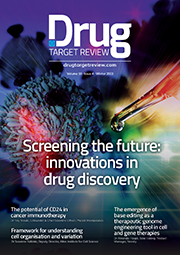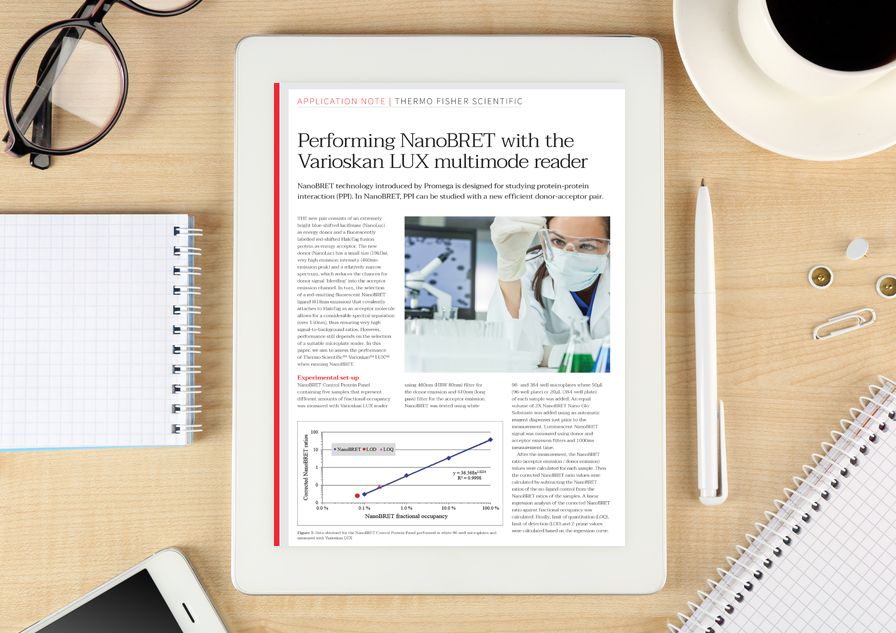Application note: Performing NanoBRET with the Varioskan LUX multimode reader
Posted: 13 December 2017 | Thermo Fisher Scientfic | No comments yet
In this paper, Thermo Fisher Scientific aim to assess the performance of Thermo Scientific Varioskan LUX when running NanoBRET.
NanoBRET technology introduced by Promega is designed for studying protein-protein interaction (PPI). In NanoBRET, PPI can be studied with a new efficient donor-acceptor pair.
The new pair consists of an extremely bright blue-shifted luciferase (NanoLuc) as energy donor and a fluorescently labelled red-shifted HaloTag fusion protein as energy acceptor. The new donor (NanoLuc) has a small size (19kDa), very high emission intensity (460nm emission peak) and a relatively narrow spectrum, which reduces the chances for donor signal ‘bleeding’ into the acceptor emission channel. In turn, the selection of a red-emitting fluorescent NanoBRET ligand (618nm emission) that covalently attaches to HaloTag as an acceptor molecule allows for a considerable spectral separation (over 150nm), thus ensuring very high signal-to-background ratios. However, performance still depends on the selection of a suitable microplate reader.
This application note is restricted - login or subscribe free to access


Why subscribe? Join our growing community of thousands of industry professionals and gain access to:
- quarterly issues in print and/or digital format
- case studies, whitepapers, webinars and industry-leading content
- breaking news and features
- our extensive online archive of thousands of articles and years of past issues
- ...And it's all free!
Click here to Subscribe today Login here
Related content from this organisation
- Using integrative biophysical approaches to understand GPCR regulation by β-arrestins
- Synthetic biology is ready for the therapeutic limelight
- Advancing novel biotherapeutics based on synthetic biology
- Global high-content screening market set to be worth $2.52bn by 2030
- Application note: Advancing CAR T-cell therapy with CTS TrueCut Cas9 Protein
Related topics
Microplate Readers, Molecular Targets, Protein, Screening
Related organisations
Thermo Fisher Scientific









